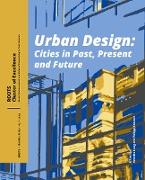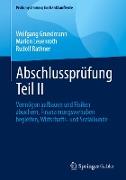Urban Design: Cities in Past, Present and Future
BücherAngebote / Angebote:
As central places of human interaction, cities influence the reality of our lives like no other phenomenon. They are in a highly complex, reciprocal relationship with changing environmental, social, political, economic and religious constellations. Accordingly, the demands placed on cities and the ideas associated with them are often subject to highly dynamic change. Especially against the backdrop of increasingly rapid urbanisation, shaping this change is one of today¿s central challenges and it deserves a prominent position in public discourse.
The booklet ¿Urban Design¿ aims to show the complexity of this discourse. It invites reflection on the possibilities of designing cities and their impact on the present and the future. To this end, it brings together contributions from very different disciplines, each of which provides their own perspectives on the phenomenon of the city.
A basic idea here is that contemporary cities cannot be designed without a deeper understanding of their historical dimension. On a practical level, this entails the (selective) visualisation of the archaeological cultural heritage, with its implications for identity politics. But its is also concerned with the dependence of historical city images on contemporary discourses, for example, religious ideas and their political utilisation or literary imaginations of the urban.
Moreover, the booklet also wants to inquire about the direct effects of material urban design on the residents. For instance, design characteristics influence orientation and movement in urban space and thus determine the movement options of handicapped and elderly people. The urban environment also has a direct impact on human health.
The extent to which current discourses on environmental problems and climate change are changing the requirements for urban design is exemplified by contributions on the topics of transport and climate-neutral construction. It is to be expected that innovative ideas in these areas, in particular, will change the appearance of the cities of the future in the long term.
Contents
Preface
Introduction: Urban Design between Past, Present and Future
Annette Haug
Archaeological Heritage in the Historic Urban Landscape
Ulrich Müller
Urban Models in Transition: The Roman City in the Levant Region and Its Spaces
Patric-Alexander Kreuz
Sacred Design: ¿Holy Cities¿ and ¿City Saints¿ in the Middle Ages
Andreas Bihrer
Mental Conceptions of Cities in Literary Texts of the Middle Ages
Margit Dahm
City, Memory and Orientation: Design Features of an Age-friendly City
Annika Hanert
Urban Living and the Rise of Lifestyle Diseases: Lessons from Microbiome Research
Thomas C. G. Bosch
CAPTN Future: Clean Autonomous Public Transport
Dirk Nowotka
Zero Waste Architecture
Sabine Schlüter
Programme, Authorship, Openness: Thoughts on Contemporary Urban Design
Vittorio Magnago Lampugnani
Contributors
For further reading
Imprint
Folgt in ca. 10 Arbeitstagen

